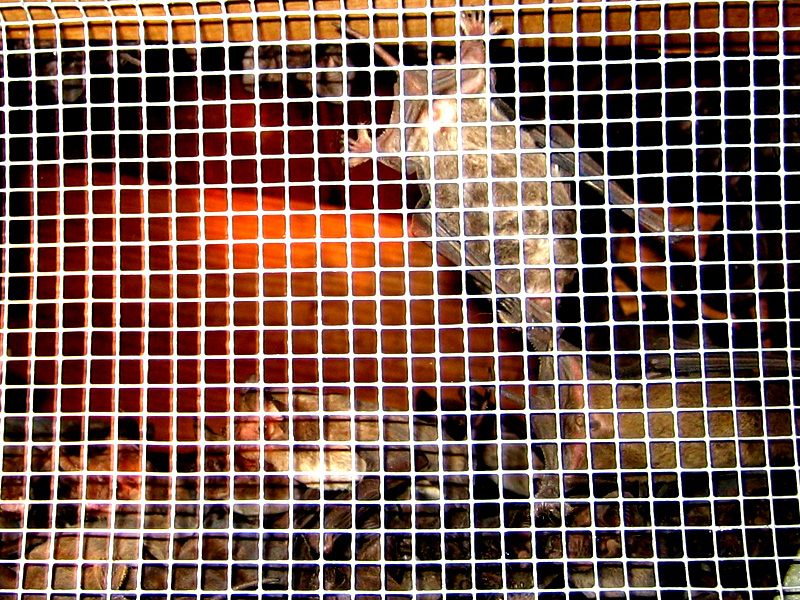- USA Wildlife Removal Education Guide and Resources
How to Trap a Bat

How To Trap Bats - Humans have often had an uneasy relationship with bats, and while they can be a good neighbor in many ways, particularly in terms of eating so many airborne insects such as mosquitoes and midges, they also have a dark reputation. The association that is made between bats and vampires is one that hasn't helped the image that most people have of bats, while the presence of rabies within the population is another reason that many people will want to get rid of bats if they find them on their property. There are many different ways of dealing with bats, and while trapping isn't always the best option, it is one way that can be used to remove these animals.
Cage Traps
This method is used to trap a variety of different animals, and will mean placing a tunnel of chicken wire over the exit point that the bats are using to get out of their colony, which guides the animals into the cage traps. Although these are often considered to be the humane option when dealing with bats, cage traps can often be fatal as the wires aren't picked up by the echolocation that bats use to navigate, meaning that they will sometimes repeatedly fly into the walls of the cage. These small animals can also become dehydrated very quickly, so these traps need to be checked regularly if you intend to use cage traps to try and deal with a bat problem.
Glue Traps And Other Lethal Traps
Using cardboard or wooden pads that are covered in glue have been used as traps for small animals for some time, and work by simply fixing the animal in place meaning it cannot get food or water, and waiting for it to die. This is a particularly painful way to die for the animals, but because of the fact that these glue traps can be affixed on the walls or roof where the bats are getting in and out of a property, there have been some examples of using this type of trap. While in theory snap traps would work when dealing with bats, because it is difficult to get the bats to trigger the trap, they are not generally used in bat management.
Problems With Using Traps To Catch Bats
Bats spend the majority of their active time airborne, which means that there is only a relatively small window of time when the bat is actually crawling on the wall or another surface when it can be trapped. If the intention of using a trap is to be humane and to re-home these bats, cage traps are often more of a hindrance than a help, and exclusion usually works better than trapping and removal of the animals. While glue traps can kill a small number of bats, because most bat colonies will have tens if not hundreds of bats, this can be a very slow process to catch all of the animals.
Bat Exclusion Funnels
The bat exclusion funnel is a very simple device that is best used when there is a small entry or exit hole that is being used by the bats to get in and out of a property. These funnels allow the bats to crawl out of the hole as normal, passing through the funnel, but the thick material will then prevent them from getting back in to the attic or cavity that they have been occupying. Ensure these funnels are installed over all of the exit points used by the bats, and once all of the bats have been removed, ensure these holes are sealed to prevent the bats from getting back into the property in the future.
Netting As An Exclusion Technique
Another common way of excluding bats from a cavity or roof space is to use netting, which works in a similar way to the funnel, but can be easier to install over a larger hole or entry point such as a broken vent. The netting is pinned to the walls or roof over the entry point, giving the bats just enough space to crawl out, but then being thick enough to prevent them from getting back in again. Ensure that the mesh of the netting is small enough so that it doesn't become entangled in the wings of a bat, and strong enough to prevent them from getting back in to the property.
Cleaning Up After Removing A Bat Infestation
It is important to wear a breathing mask when cleaning up after removing the bats from a cavity or roof space, as disturbing the droppings can send Histoplasmosis spores into the air, which can be very dangerous if inhaled. It is also best to wear protective clothing in case there are any bats remaining. Make sure that you remove as much of the loose droppings as possible, and where necessary look to replace contaminated insulation. It is also worth considering using a decontamination fumigator to ensure any potential diseases are killed, while making sure the roof or cavity is sealed to prevent future infestations is also important.
Go back to the main Bat Removal page for more information about bat trapping and information about how to catch a bat in a cage trap.

